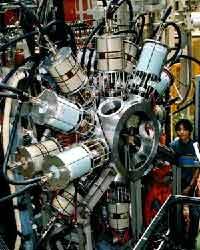Lithium Cores Tablets

Lithium is a very light element. The most abundant in nature is the lithium-7 isotope, with a nucleus of three protons and four neutrons. In addition to electrons, protons and neutrons are distributed at energy levels according to Pauli's exclusion principle. In no case are two particles of the same spine introduced at each energy level. The spin moment value of these particles can only be +1/2 or -1/2, so if they are filled with two levels, a third particle must enter the next energy level. Thus, the first to be filled are those with a low energy level. In addition, physically, low energy levels are located at the core of the core.
This happens with the lauu neutrons of the Litio-7 isotope, distributed on two energy levels. The university laboratory of Tohoku has decided to change the character of the outer neutron. Neutrons are formed by quarkes. Scientists have replaced one of these quarks with another type. This has turned the neutron into a lambda particle. The Litio-7 isotope has become "litium-6+L". But the lambda particle does not integrate with neutrons in the Pauli principle. In fact, the new particle is not located in the outer layer, so the core is "compressed".
It is a new way of treating particle physics and analyzing interactions within nuclei.
Buletina
Bidali zure helbide elektronikoa eta jaso asteroko buletina zure sarrera-ontzian











